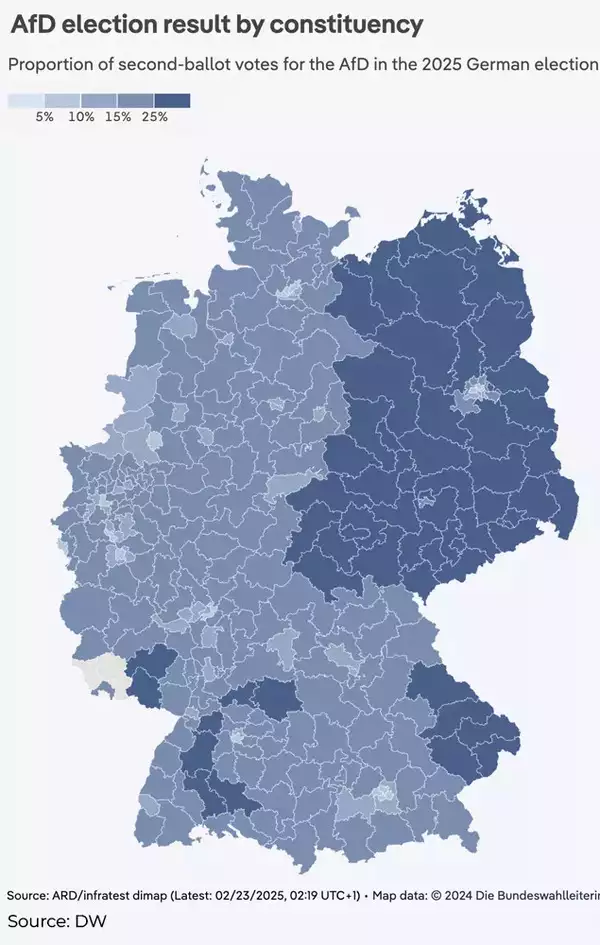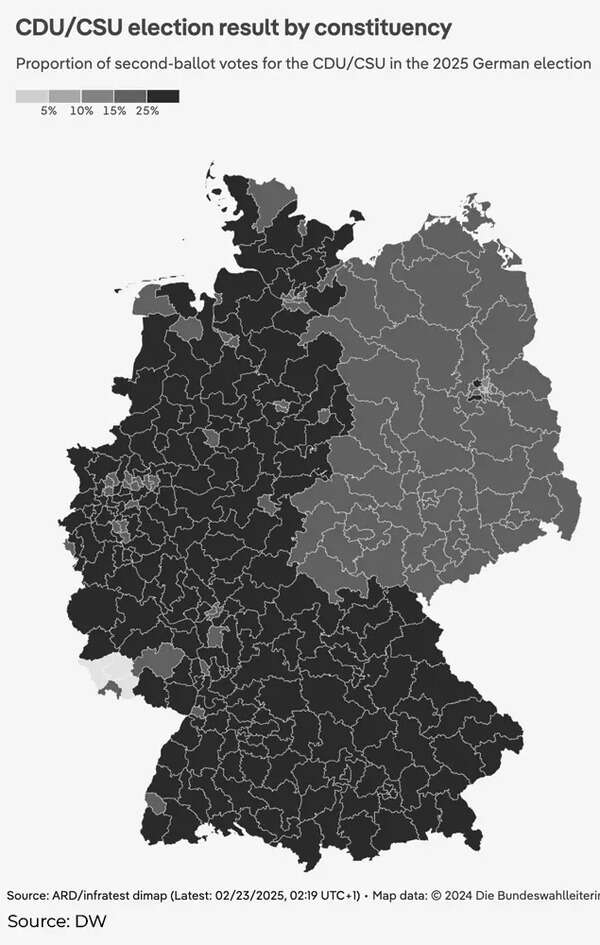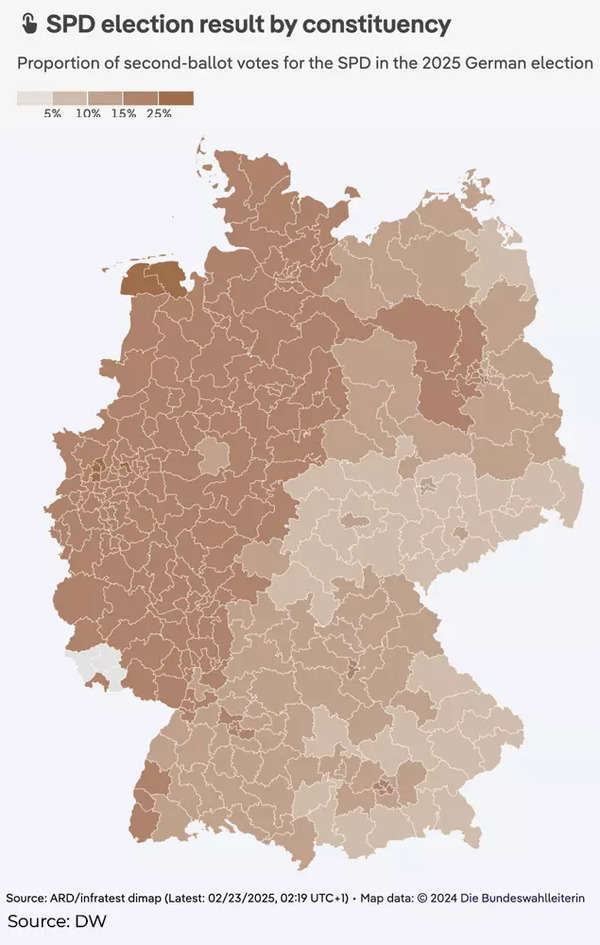Germans cast their ballots in an early federal election on February 23 with a record-breaking voter turnout of 83.5 %, which is the highest level since unification in 1990. After the three-way coalition government of Social Democrats, Greens, and the neo-liberal Free Democratic Party ( FDP ), which had been in place in late 2024, the election was called.
In the European political elections, parties ‘ votes are cast.
According to projections, the right-wing populist Alternative for Germany ( AfD ) led by chancellor candidate Friedrich Merz and its sister Christian Social Union ( CSU) received the most votes.
Gains and losses for European functions
The far-right AfD won the election in terms of voting gains, while the SPD, led by Chancellor Olaf Scholz, lost the most seats in comparison to earlier elections.
How are the votes distributed in Germany’s congress?
Germans have two options when casting their ballots: one for a member representing their district and the other for a party’s state list. A primary candidate running in a given political district receives the majority of the parliament’s vote, guaranteeing that every district is represented. The Bundestag, the lower house of parliament, is decided by the second ballot, and this determines how many prospects will be elected to the Bundestag.
There are 630 votes in the Bundestag. A party’s voting reveal is based on how many seats it has. A party may receive at least 5 % of votes to provide parliament. However, parties that field winning candidates in at least three electoral districts are exempt from the 5 % threshold for the party.
Possible partnership options
While the CDU/CSU have won the largest communicate of seats, they do not have an overall majority. The group is set to achieve 208 votes in the Bundestag. They will need to provide a partnership with another group to safe 316 seats in the Bundestag, the maximum for a lot, and form the second government. The CDU has ruled out a partnership with the AfD, insisting that it is the “firewall” to the far-right. In light of the last seat distribution, a two-way grand partnership with the SPD or a three-way partnership with the Greens is the most possible choice. The partnership computer displays potential outcomes for the coalition.
Vote migration
Voters on Sunday switched parties and shifted across the group variety. One of the biggest migrations was the center-left SPD’s transition to the conventional CDU/CSU, which received approximately 2 million Social Democrats ‘ votes. The Left Party benefitted from voting movement from both the SPD and the Greens, adding 540, 000 and 600, 000 vote respectively.
Election results according to time
Young people between the ages of 18 and 24 leaned to ends, voting more frequently for the far-right AfD and the Left Party. The younger citizens who elect the more traditional events, such as the SPD and CDU, received the lowest voting returns. One of their lowest voter turnouts was for the Greens, who have long been a favourite of the children. More than 60 citizens were more likely to cast ballots for SPD and CDU.
How did voters cast their ballots in the vote?
People voted more for the SPD, Greens, and the Left Party, while men tended to cast their ballots more cautiously than women. The change in vote based on gender was only a few percentage points, aside from the AfD.
Election benefits based on level of education
The SPD and the CDU were the party’s candidates with the least amount of support among citizens without a university education. Individuals with a standard education were twice as likely to cast for AfD as those with higher education. Compared to those with simple education levels, European citizens with higher levels were more than twice as likely to support the Greens and the Left Party.
Local election styles
Nationwide, the AfD achieved about 20 % of the voting. However, benefits vary considerably from region to region. The AfD, which is classified in piece as right-wing radical, is now the strongest force in eastern Germany. In the states of Brandenburg, Mecklenburg-Western Pomerania, Saxony, Saxony-Anhalt and Thuringia, the far-right group is obviously in the guide, with several districts reporting over 30 % of the second ballot going to the AfD, while the CDU and SPD trailed far behind.

Map statistics: 2024 Die Bundeswahlleiterin
In the state of Thuringia, house to Björn Höcke, who was convicted for using banned Nazi phrases, the group received more than 38 % of the vote, nearly twice the number of seats for the CDU. Berlin is the exception in Germany’s past East, where the Left Party won the most votes in the cash.
The supply of vote for the CDU and SPD reflects the East-West break. In the north, west, and northwest, the CDU and the CSU received a higher percentage of the vote. In Bavaria, the CSU won all 47 divisions.

Map statistics: 2024 Die Bundeswahlleiterin
The SPD’s standard pro-labor guidelines also enjoy aid in the north and west, where the group’s strongest results were seen.

Map statistics: 2024 Die Bundeswahlleiterin




